





| Within weeks of marrying my mother,
my
father left for China. He worked for Chrysler and was posted to the Truck Maintenance Program Overseas in Kunming. The Program was connected with the servicing of thousands of vehicles employed in transporting strategic materials connected with the war effort. First a journalist, his duties also included inventory of arriving materials. The Burma Road had just been closed and now supplies arrived by air. |
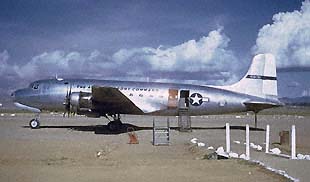 |
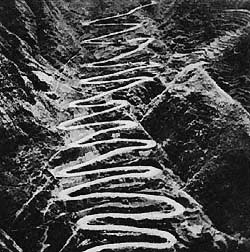 |
The Air Transport Command was given
the task of
supplying the US and Chinese armies with materiel, returning wounded and sick troops and carrying war-important personnel. Thousands of Douglas C-54's like the one shown above flew the nearly 11,000 miles from New York to Kunming, China - a route that passed through Newfoundland and the Azores, Casablanca to Cairo, on to Calcutta and into Karachi where the final leg of the trip passed above the Himalayan Mountains. The "Hump" as it was known, claimed many an aircraft with minimum altitudes of 17,000 feet and incessant bad weather. Armed with an oxygen mask and a prayer, thousands of passengers made the journey along with tons upon tons of vehicles and parts. |
| Shown above is the Assam switchback
portion of
the Burma Road. My father attempted to document as much of the route as his time permitted. Although he was issued a uniform and given a minor rank, his civilian status allowed him much freedom. He spent nearly 2 years in Kunming with prior postings in Cairo, Calcutta and Karachi. During that time he took nearly a thousand Kodachrome slides that have withjstood a remarkable test of time. All the color photos displayed here are from that era. They have not been retouched digitally except to remove some dust. He spoke to me often of the "Hump". He told me how he rode around in a jeep on the rims, while on rural roads he saw countless ox-carts and rickshaws with brand new tires. Whenever planes went down in the Hump, scavengers were quick to salvage the cargo, which found a ready market. The Japanese were still threatening in the East and slowly the internal Communist forces were gaining ground. |
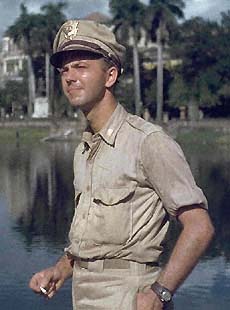 |
 |
The Hump, hazardous as it was, took
four hours while
the Burma Road took two weeks. Most of the planes were C-46's which carried supplies, parts, ammunition and military mail. The C-54's were used primarily on the trans-oceanic portions of the route. |
| My dad kept everything from his posting
in China: hotel bills, maps, diaries, coins and currency - even his laundry bills! And my mother religiously kept all his letters, which today help form a very complete record of that experience. |
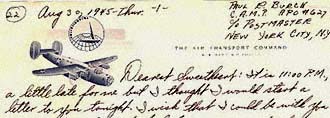 |
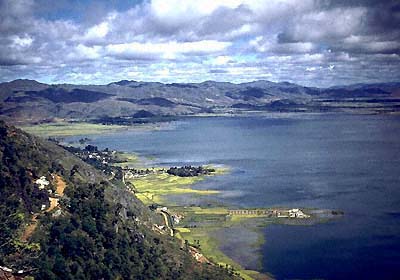 |
Now, some 50 years later,
it is my dream to journey to China in the near future and retrace his steps. Armed with his maps and notebooks I would like to reproduce his photographs from the same viewpoints. Kodachrome will be the film of course, and although I will be using my newer camera systems, I also intend to shoot some film with his trusty old Argus C-3, the same one he used to take these photos over 50 years ago, and the first camera he gave to me. |
| I will probably find many things have
changed but I also suspect that some views will be almost the same. I do know that this project will honor my father's memory and will also pay tribute to one of Kodak's greatest film products. There were numerous theaters of World War II that people are only dimly aware of. Air Traffic Command's role in Operation Hump is one of those stories, overshadowed by the dropping of the Atomic Bomb and subsequent end of the war. |
 |